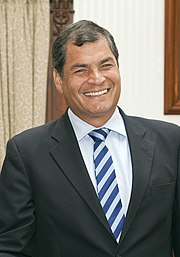List of heads of state of Marirana: Difference between revisions
Britbong64 (talk | contribs) No edit summary |
Britbong64 (talk | contribs) |
||
| Line 510: | Line 510: | ||
|- | |- | ||
|align="center" rowspan="2" style="background: #FFA500;"|{{color|white|'''24'''}} | |align="center" rowspan="2" style="background: #FFA500;"|{{color|white|'''24'''}} | ||
|align="center" rowspan="2"|[[File: | |align="center" rowspan="2"|[[File:CarlosHerrerayLuna.jpg|100px]] | ||
|align="center" rowspan="2"| | |align="center" rowspan="2"|''[[Serafino Minuto-Rizzo]]''<br><small>(1849-1908)</small> | ||
|align="center" style="background: #FFA500;"|{{color|white|'''-'''}} | |align="center" style="background: #FFA500;"|{{color|white|'''-'''}} | ||
|<small>17 August</small><br>1897 | |<small>17 August</small><br>1897 | ||
| Line 552: | Line 552: | ||
|colspan="5"|<small>Winning the 1905 election, Carozza was never inaugurated as president with military officer [[Ottaviano Castello]] ousting the liberal government before Carozza could take office. He is however legally recognised as a constitutional president by the Mariranan government. | |colspan="5"|<small>Winning the 1905 election, Carozza was never inaugurated as president with military officer [[Ottaviano Castello]] ousting the liberal government before Carozza could take office. He is however legally recognised as a constitutional president by the Mariranan government. | ||
|} | |} | ||
==Sotirian State of Marirana (1905-1936)== | ==Sotirian State of Marirana (1905-1936)== | ||
{|class="wikitable" width="100%" | {|class="wikitable" width="100%" | ||
Revision as of 21:56, 21 March 2019
| President of the Federative Republic of Marirana | |
|---|---|
| Presidente della Repubblica Federativa d'Marirano | |
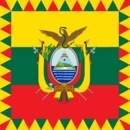 Presidential Standard | |
| Style | The Most Excellent |
| Residence | Presidential Palace |
| Term length | Five years, non-renewable |
| Inaugural holder | Romano Michelozzi First President of the Federative Republic of Marirana under the constitution of 1992 Onofrio Moretti First individual named President under the constitution of 1760 |
| Formation | first: 1760 Constitution current: 1992 Constitution |
| Salary | $260,000 annually |
| Website | Office of the President |
The Federative Republic of Marirana in its history has had various heads of state under different regimes in its history. Since the declaration of an independent Marirana in the 1719 there has been 45 heads of state of Marirana, of which 1 was a monarch, 34 constitutionally elected presidents, 3 military dictators and 7 interim leaders with the country being ruled by a military occupation as well and having 3 de facto head of states. Since 1994 Mariranan heads of state have governed as republican presidents under the 1992 constitution.
The pre-colonial Marirana was governed by petty kingdoms and tribes, with the largest being the Oaexicun Empire. Under colonial rule Marirana was officially ruled by the Archbishop of Aquinas who was appointed by the Solarian Catholic Church. The independence of Marirana was successful as loyalists and nationalists agreed to create a federal republic under a dictator elected by parliament with the first dictator being Cosimo Leopolda. In 1860 reformists changed the constitution changing the title to president, limiting presidents for a single five year term in office which was changed in 1790 to allow for re-election. In 1811 in a coup d'état radicals under Salvatore Moretti took power transforming the presidency into a dictator under a centralised state. The Mariranan-Roessen rule saw Marirana become a Grand Duchy in 1827.
In 1846 the Centralist Republic of Marirana was created with a strong presidency - between 1852-1870 Marirana was governed as a “presidential dictatorship”, returning to a constitutional republic in 1870. In 1905 the election of Ottaviano Castello saw the creation of the Sotirian State of Marirana and the replacement of the presidency with the position of Il Duce which was a personalist, right-wing dictatorship.
The Asterian occupation following the Great War saw Marirana transformed into a representative democracy with a liberalised economy, with presidents being able to be elected to a single five year term as was the case under the First Federative Republic. In 1972 the Fourth Federative Republic was dissolved and replaced by a civic-military dictatorship which saw the post of president become a figurehead, with real power being held by the head of the Standing Committee of Armed Forces Command, a military junta. In 1986 the dictatorship collapsed but the 1973 constitution remained in place until 1992, with the first president being elected under the 1992 constitution being Romano Michelozzi. The current president is Lorenzo Occhetto first elected in 2018.
Key
Military and non-partisan
Conservative and Sotirian Democratic
Liberal, Republican and Radical
Socialist
Republic of San Marco (1714-1719)
| Supreme Executive Board | Took office | Left office | Notes | |
|---|---|---|---|---|

|
Cosimo Leopolda | 24 October 1714 | 12 July 1719 | Led the 1st Revolutionary Army during the independence war. |

|
Giosuè Balsamo-Crivelli | 24 October 1714 | 8 April 1717 | Led the 2nd Revolutionary Army during the independence war. Killed in 1714 during the Battle of Turania. |

|
Ciriaco Salandra | 24 October 1714 | 12 July 1719 | De facto Minister of Foreign Affairs. Considered the primary drafted of the declaration of independence. |

|
Umberto di Francesco | 8 April 1717 | 12 July 1719 | Appointed in 1719 to replace Balsamo-Crivelli. Led the 3rd Revolutionary Army. |
First Republic (1719-1760)
| No | Picture | Name | Term | Tenure | Presidential mandate | Affiliation | |
|---|---|---|---|---|---|---|---|
| 1 | 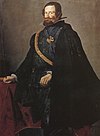
|
Generalissimo Cosimo Leopolda (1677–1738) |
- | 12 July 1719 |
25 March 1720 |
Interim president | Riformisti |
| 1 | 25 March 1720 |
5 October 1724 |
1722 — 99.4% | ||||
| Leopolda led the independence of Marirana, Leopolda was the first president not of white descent. Under Leopolda's presidency attempts were made to create strong federal institutions, to support revolutionary action across Asteria, implement free-trade and laïcité policies and to secure recognition of Mariranan independence from other powers. Leopolda's later term saw the start of the Secessionist Wars and he was killed in the Battle of Venanzo in 1724. | |||||||
| 2 | 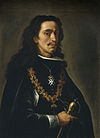
|
General Sergio Violante (1705-1764) |
2 | 5 October 1724 |
14 June 1726 |
1724 — 99.4% | Riformisti |
| The vice-president of Leopolda, Violante did not have the political support of Leopolda resigning in 1726 when he was ousted in a coup d'état by conservative forces. | |||||||
| 3 | 
|
General Umberto di Francesco (1694-1755) |
- | 14 June 1726 |
17 November 1730 |
Interim president | Moderati |
| 3 | 17 November 1730 |
23 August 1755 |
1730 — 86.4% | ||||
| Ousting Violante in 1734 di Francesco was able to repress opposition to his third term in government before being elected president-for-life. He then started to pursue conservative policies undermining parliament, centralising power, giving more power to the church, continuing slavery and implementing protectionist tariffs. He died of malaria in 1755. | |||||||
| 4 | 
|
General Renato Melucci (1716-1768) |
4 | 23 August 1755 |
26 May 1760 |
1755 — 100% | Moderati |
| Continued his predecessors policies, leading to dissatisfaction with Melucci's rule amongst liberal officers and for him to be ousted in 1860 in the 26 May Revolution. | |||||||
Second Republic (1760-1811)
| No | Picture | Name | Term | Tenure | Presidential mandate | Affiliation | |
|---|---|---|---|---|---|---|---|
| 5 | 
|
General Onofrio Moretti (1728-1771) |
- | 26 May 1760 |
14 October 1762 |
Interim president | Moderate Republican |
| 5 | 14 October 1762 |
14 October 1767 |
1762 — 100% | ||||
| Leader of the 26 May Revolution, Moretti launched several liberal reforms such as the abolition of slavery and the creation of a new constitution. After serving a single constitutional term Moretti stepped down from the presidency. | |||||||
| 6 | 
|
General Guido Causin (1736–1804) |
6 | 14 October 1767 |
14 October 1772 |
1767 — 100% | Moderate Republican |
| Elected in 1767, Causin largely continued his predecessors policies whilst clamping down on political dissent and supporting the Federation of Asteria in its independence war. He left office in 1772. | |||||||
| 7 | 
|
General Paolo Francetti (1733-1792) |
7 | 14 October 1772 |
14 October 1777 |
1772 — 100% | Moderate Republican |
| Elected in 1772, Francetti forged ties with the newly independent Federation of Asteria, promoted free trade policies and continued anti-clerical and anti-conservative repression. Considered a glutton and ineffective president, Francetti left office in 1777. | |||||||
| 8 | 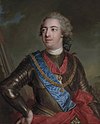
|
General Vito Bianco (1738-1803) |
8 | 14 October 1777 |
14 October 1782 |
1777 — 100% | Moderate Republican |
| Elected in 1777, Bianco was in 1777 forced to default on Marirana's debt due to his predecessor's excesses. His presidency was marred by instability and political polarisation by the time he left office in 1782. | |||||||
| 9 | 
|
General Ettore Amato (1730-1788) |
9 | 14 October 1782 |
23 January 1786 |
1782 — 100% | Moderate Republican |
| Elected in 1782, Amato failed to placate the increasingly conservative army as radical Riformisti declined to support his government. In 1786 he was ousted in a coup d'état by conservative elements of the army. | |||||||
| 10 | 
|
General Maurizio la Russa (1742-1799) |
- | 23 January 1786 |
8 May 1787 |
Interim president | Opportunist Republican |
| 10 | 8 May 1787 |
8 May 1792 |
1787 — 100% | ||||
| 11 | 8 May 1792 |
8 May 1797 |
1792 — 100% | ||||
| Coming to power in 1786, la Russa was formally elected president in 1787 where he started to undermine both radical and ultra-reactionary forces in Marirana, retaining the 1761 constitution (only with presidential re-election and less power to the provinces). la Russa's centralising reforms led to greater state revenue allowing Marirana to significantly reduce its debt and modernise the military, He stepped down from the presidency in 1797 by which time radical forces opposed to his pro-clericalism became more prominent. | |||||||
| 11 | 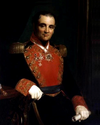
|
General Luciano Rosato (1745-1812) |
12 | 8 May 1797 |
8 May 1802 |
1797 — 100% | Opportunist Republican |
| Elected in 1797, Rosato failed to appease anti-clerical forces that demanded the removal of clerical influence in Mariranan politics. In 1800 radicals led by Salvatore Renzi staged an uprising against Rosato starting the Mariranan Civil War. Rosato declined to run for re-election in 1802. | |||||||
| 12 | 
|
General Giuseppe Bartolozzi (1748-1811) |
13 | 8 May 1802 |
8 May 1807 |
Interim president | Opportunist Republican |
| 14 | 8 May 1807 |
27 June 1811 |
1807 — 100% | ||||
| Elected to replace Rosato, Bartolozzi's term was dominated by the civil war. Unwilling to compromise on the issue of clericalism Bartolozzi continued the civil war, but lost when Renzi's forces occupied Aquinas. | |||||||
Third Republic (1811-1827)
| No | Picture | Name | Term | Tenure | Presidential mandate | Affiliation | |
|---|---|---|---|---|---|---|---|
| 13 | 
|
Generalissimo Salvatore Renzi (1761-1838) |
- | 27 June 1811 |
5 April 1814 |
Interim president | Radical Republican |
| 15 | 5 April 1814 |
5 April 1819 |
1814 — 99.53% | ||||
| 16 | 5 April 1819 |
5 April 1824 |
1819 — 99.53% | ||||
| 17 | 5 April 1824 |
17 June 1827 |
1824 — 99.53% | ||||
| Took power in a coup d'état, Renzi dissolved congress and started a "reign of terror" suppressing monarchist reactionaries, right-wing Moderati, the clergy and other "counter-revolutionaries" to consolidate the revolution. In 1823 he won the presidential election that year as the only candidate, and generally had strong support from the left-wing bourgeoisie and the peasantry for his revolutionary, proto-socialist policies and anti-clerical. In 1827 he came into conflict with Roeselle fleeing Marirana as Roeselle occupied the country. | |||||||
| 14 | 
|
General Francesco d'Avalos (1770-1827) |
- | 17 June 1827 |
22 September 1827† |
Interim president | Radical Republican |
| Renzi's vice-president, d'Avalos attempted to hold back Roessen forces before being killed in the Battle of San Marco. | |||||||
Grand Duchy of Marirana (1827-1846)
| No. | Name | Reign start | Reign end | House | Marriage(s) Issue | ||
|---|---|---|---|---|---|---|---|
| 1 |  Francesco (1794-1868) |
4th October 1827 | 13th April 1846 | Rousseau | TBA | ||
| Crowned Grand Duke with Roessen backing in 1827, François (known as Francesco in Marirana) was seen as a puppet of Roessen forces allowing them unprecedented influence Mariranan affairs. Over time his government became increasingly unpopular as revolts occurred within the nation, and in 1846 was killed in a coup d'état military officers. | |||||||
Fourth Republic (1846-1884)
| No | Picture | Name | Term | Tenure | Presidential mandate | Affiliation | |
|---|---|---|---|---|---|---|---|
| 15 | 
|
Field Marshal Italo Agostino Saragat (1801-1870) |
- | 13 April 1846 |
6 June 1847 |
Interim president | Conservative Party |
| Saragat led the 1846 coup that deposed the grand duchy. Under his rule, Marirana rejected influence from Roselle and began to create a conservative Catholic state. Pressure from liberal reformers meant Saragat limited the presidency to a single term. | |||||||
| 16 | 
|
General Bernando Tonduzzi (1793-1869) |
18 | 6 June 1847 |
6 June 1852 |
1847 — 44.3% | Conservative Party |
| The former Vice-President to Saragat, Tonduzzi conservative policies relating to the church were implemented. However increasingly over time Tonduzzi clashed with Saragat who soon asserted himself as the de facto ruler of Marirana. | |||||||
| (15) | 
|
Field Marshal Italo Agostino Saragat (1801-1870) |
18 | 6 June 1852 |
6 June 1857 |
1852 — 39.7% | Conservative Party |
| Returning to the presidency in 1857, Saragat would come to dominate Mariranan politics until his death in 1870. Under his second term there was significant economic development and administrative reform - however repression against political opponents started with the government becoming a "presidential dictatorship" as the free press was dismantled. | |||||||
| 17 | 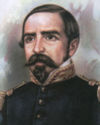
|
General Giacomo Scialoja (1796-1864) |
19 | 6 June 1857 |
6 June 1862 |
1857 — 39.7% | Conservative Party |
| Elected in 1857, Scialoja was regarded as a puppet of Saragat. Under his presidency Marirana's debt issues lessened whilst better relations with the Federation were promoted. | |||||||
| (15) | 
|
Field Marshal Italo Agostino Saragat (1801-1870) |
20 | 6 June 1862 |
6 June 1867 |
1862 — 39.7% | Conservative Party |
| Saragat's third presidency was marked by Marirana's successful intervention in the Roessen civil war that saw Marirana retake territory lost to Roeselle during the 1820's - for this Saragat was known as the "Liberator". | |||||||
| 18 | 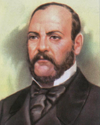
|
Pellegrino Sant'Agata (1818-1897) |
21 | 6 June 1867 |
6 June 1872 |
1867 — 39.7% | Conservative Party |
| The first civilian president and initially a puppet of Saragat, with the latter's death in 1870 led Sant'Agata to promote more independent policies such as liberalising the press and pushing for more expansive industrialisation. | |||||||
| 19 | 
|
General Riccardo Fisichella (1820-1894) |
22 | 6 June 1872 |
6 June 1877 |
1877 — 39.7% | Conservative Party |
| Fisichella's term coincided with the economic growth Marirana had enjoyed in the past two decades starting to slow down. Fisichella departed from his predecessors by supporting free trade and attempting to decentralise government. | |||||||
| 20 | 
|
General Fortunato Pacifico (1835-1889) |
23 | 6 June 1877 |
6 June 1882 |
1877 — 39.7% | Conservative Party |
| Under Pacifico moderate industrialisation was pursued whilst immigration laws were liberalised in order to encourage population growth. | |||||||
| 21 | 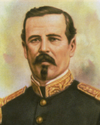
|
General Buscarello d'Ormea (1829-1894) |
24 | 6 June 1882 |
27 August 1884 |
1882 — 39.7% | Conservative Party |
| Under d'Ormea Marirana fought the Frontier War with Roeselle that led to the territory gained in 1864 to be annexed by Roeselle. As a result of the war d'Ormea was ousted from power by liberal elements of the armed forces. | |||||||
Fifth Republic (1884-1905)
| No | Picture | Name | Term | Tenure | Presidential mandate | Affiliation | |
|---|---|---|---|---|---|---|---|
| 22 | 
|
General Joaquim Durão de Azevedo (1820-1894) |
- | 27 August 1884 |
15 March 1885 |
Interim president | Liberal Party |
| 25 | 15 March 1885 |
15 March 1890 |
1885 — 62.3% | ||||
| de Azevedo, a general of Floren descent, was the leader of the 1884 coup that deposed the conservative party. With strong backing from the liberal bourgeoisie and the peasantry and facing opposition from the clergy and military, de Azevedo built a strong alliance with coffee merchants in southern Marirana leading to his presidency to be the start of the so-called "aristocratic republic". de Azevedo supported classical liberalism and free trade as well as secular reforms to the church and several liberal reforms. | |||||||
| 23 | 
|
General Francesco Luzzatti (1838-1914) |
26 | 15 March 1890 |
15 March 1895 |
1890 — 62.4% | Liberal Party |
| Elected in 1890, Luzzatti supported the same principles of free trade as his predecessor. Under his administration Marirana acquired an unprecedented level of foreign debt albeit a large degree of political stability. | |||||||
| (22) | 
|
General Joaquim Durão de Azevedo (1820-1894) |
27 | 15 March 1895 |
17 August 1897 |
1895 — 57.8% | Liberal Party |
| de Azevedo took power in 1895 after running for a second non-consecutive term. His second presidency was marked with more strained relations with Asterian cocoa companies who opposed his more progressive, liberalising reforms. In 1896 he decided to close down several Asterian coca companies resulting in the Cocoa War which saw him ousted from office. | |||||||
| 24 | 
|
Serafino Minuto-Rizzo (1849-1908) |
- | 17 August 1897 |
15 March 1900 |
Interim president | Liberal Party |
| Appointed as an interim president following the collapse of the Balsamo administration. His main policy was the restoration of Asterian coffee companies in Marirana. | |||||||
| 25 | 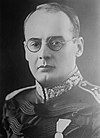
|
General Luigi Balsamo (1850-1918) |
28 | 15 March 1900 |
27 May 1903 |
1900 — 64.3% | Liberal Party |
| Elected in a divided electoral college, Balsamo took power as political stability started to collapse with industrial action, conflicts between left and right groups and a divided parliament leading to the collapse of the Liberal Party. He was assassinated by a political opponent in 1903. | |||||||
| 26 | 
|
Giovanni Lombardi (1850-1918) |
- | 27 May 1903 |
20 February 1905 |
Interim president | Liberal Party |
| A civilian politician, Lombardi took power following Balsamo's assassination. Lombardi had no support within the military resulting in him appointing members of the Conservatives to his cabinet, weakening liberal hegemony. Red December - a sustained period of left wing action in 1904 - led to Lombardi to impose a state of emergency and rule by decree with the aid of Ottaviano Castello, who would force himself into office following the 1905 election. | |||||||
| 27 | 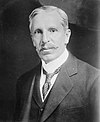
|
Ettore Carozza (1850-1918) |
29 | Never took office | 1905 — 60.53% | Liberal Party | |
| Winning the 1905 election, Carozza was never inaugurated as president with military officer Ottaviano Castello ousting the liberal government before Carozza could take office. He is however legally recognised as a constitutional president by the Mariranan government. | |||||||
Sotirian State of Marirana (1905-1936)
| No | Picture | Name | Term | Tenure | Presidential mandate | Affiliation | |
|---|---|---|---|---|---|---|---|
| 28 | 
|
Generalissimo Ottaviano Castello (1859-1940) |
- | 20 February 1905 |
24 May 1910 |
Unconstitutional term | Integrated Union of the Traditionalist Right |
| 30 | 24 May 1910 |
17 June 1915 |
1910 — 99.5% | ||||
| 31 | 17 June 1915 |
13 June 1920 |
1915 — 99.9% | ||||
| 32 | 13 June 1920 |
26 June 1925 |
1920 — 99.7% | ||||
| 33 | 26 June 1925 |
24 June 1930 |
1925 — 99.5% | ||||
| 34 | 24 June 1930 |
1 March 1936 |
1930 — 99.3% | ||||
| Elected in 1905 with the backing of right-wing parties, Castello subsequently dissolved congress, creating a one-party state under the Integrated Union of the Traditionalist Right (UIdDT). Hostile to liberalism, democracy, socialism and communism Castello's regime was authoritarian, corporatist and Catholic. Although far-right and possessing several features reminiscent of National Functionalism Castello's reactionary politics mean his regime was more in line with a traditionalist, authoritarian form of conservatism. Upon coming to power, Castello launched the White Terror which saw 500,000 suspect communists and leftist agitators killed by Castello's regime. Castello began to create a centralised, military dictatorship as well as a cult of personality. Economically Castello launched a policy of autarkey and corpratisation based on the ideas of national syndicalism. Although in the short term an economic disaster, autarkey meant that Marirana was isolated from the Great Depression resulting in Castello to begin a programme of military Keynesianism. In the Great War Castello supported Gaullica and alongside Satucin invaded both Federation of Asteria and Roeselle. However, Castello's regime lost the war causing the Generalissimo to flee the country. | |||||||
| 29 | 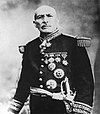
|
Field Marshal Enzo Sanmartino (1863-1942) |
- | 1 March 1936 |
18 March 1936 |
Interim president | Integrated Union of the Traditionalist Right |
| Castello's deputy, Sanmartino officially signed the surrender of Marirana as Asterian and Roessen troops occupied the country. On the 18th March Sanmartino officially dissolved the Sotirian State. | |||||||
Occupation (1936-1938)
| No. | Name | Term start | Term end | Other positions held | |||
|---|---|---|---|---|---|---|---|
| - | 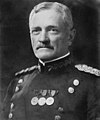 General Steven Watters (TBA) |
18th March 1936 | 24th August 1940 | TBA | |||
| The Commanding Officer of Federation forces in Asteria, Watters was appointed as the leader of the post-war occupation of Marirana following the declaration of surrender. As Chief of the Occupation Watters oversaw the Santa Maria trials which prosecuted former members of the Castello regime, liberalised the Mariranan economy and created the framework of a representative democracy. In 1940 Watters oversaw successful elections which heralded the end of the occupation. | |||||||
Sixth Republic (1940-1972)
| No | Picture | Name | Term | Tenure | Presidential mandate | Affiliation | |
|---|---|---|---|---|---|---|---|
| 30 | 
|
Niccolò Pellegrini (1893-1944) |
35 | 24 August 1940 |
27 October 1944 |
1940 — 50.4% | Rally for the Republic |
| Elected with the support of the Federation, Pellegrini implemented anti-clerical policies. However he quickly fell out with the left-wing Lanzastra movement of Palmiro Lanza and with Asterian assistance crush the movement. His harsh, anti-partigiani policies alienated his left-wing allies. Despite defeating the Lanzastra militarily in 1940, Pellegrini's increasing authoritarianism led to his assassination in 1944. | |||||||
| 31 | 
|
Piero Galimberti (1883-1961) |
- | 27 October 1944 |
24 August 1945 |
Interim president | Rally for the Republic |
| Appointed as interim president as vice-president to Pellegrini, Galimberti attempted to continue the policies of Pellegrini. However he lost the 1945 election due to the unpopular anti-clerical policies of Pellegrini. | |||||||
| 32 | 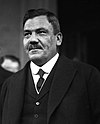
|
General Jordi i Teixidor (1894-1968) |
36 | 24 August 1945 |
24 August 1950 |
1945 — 54.3% | Republican Democratic Concentration |
| 37 | 24 August 1950 |
8 July 1952 |
1950 — 99.6% | ||||
| A general of Floren descent, i Teixidor changed the constitution to allow presidential re-election. i Teixidor was more pro-Asterian than his predecessor and joined the JDF in 1946 following the suppression of the partigiani. Welcoming foreign investment and economic liberalisation, i Teixidor lost popularity and after mass protests fled the country in 1952. | |||||||
| 33 | 
|
Emilio Štromajer (1900-1976) |
- | 8 July 1952 |
15 October 1953 |
Interim president | Rally for the Republic |
| The leader of the Rally for the Republic and of Carinthian descent Štromajer became president following i Teixidors resignation, implementing several democratising reforms. At the 1953 election Štromajer was defeated by Antonio Michelozzi but chose to sign the pact of democracy ceding power to the new president in a historic transfer of power. | |||||||
| 34 | 
|
Antonio Michelozzi (1899-1965) |
38 | 15 October 1953 |
15 October 1958 |
1953 — 57.54% | Anti-Revolutionary Party |
| A populist and successful businessman, Michelozzi won the 1953 election by a wide margin and the Anti-Revolutionary Party sweep both the Senate and House of Representatives. His government saw mild social reforms implemented, supported trade unions, ended rampant anti-clericalism and large scale infrastructure projects that aimed to modernise Marirana - whilst starting an economic boom this led to a bigger debt. Although extremely popular for his populist policies his government was accused of nepotism and cronyism. | |||||||
| 35 | 
|
Silvano Brazzi (1900-1976) |
39 | 15 October 1958 |
27 Novemeber 1961 |
1958 — 37.68% | Rally for the Republic |
| Elected in 1958, Brazzi continued the ISI economic policy and passed progressive legislation regarding indegionus and women's rights, including giving women the right to vote in 1960. Brazzi attempted to push a land reform bill that would radically redistribute much of Mariranan land to poor farmers'; this proposal was vetoed by parliament leading to Brazzi to be impeached in 1961, the first president to be impeached. | |||||||
| 36 | 
|
Raimondo Zamparini (1900-1976) |
- | 27 Novemeber 1961 |
15 October 1963 |
Interim president | Anti-Revolutionary Party |
| The vice-president to Brazzi Zamparini was considered to be a conservative, repealing Brazzi's progressive legislation. Zamparini redirected foreign policy improving relations with Asteria and built close ties with JDF members, whilst disavowing revanchism towards Roeselle. He chose not to run in the 1963 election. | |||||||
| (34) | 
|
Antonio Michelozzi (1899-1965) |
40 | 15 October 1963 |
27 March 1965† |
1963 — 60.27% | Anti-Revolutionary Party |
| Running again for the presidency, Michelozzi continued the populist reforms he had implemented in his previous government. Michelozzi's populist policies and pork barrel projects led to high debt alongside increased cronyism and corruption with inflation beginning to rise much higher. However in 1965 Michelozzi was killed after he was shot by a right-wing extremist. | |||||||
| 37 | 
|
Paolo Di Quintino (1911-2002) |
- | 27 March 1965 |
15 October 1968 |
Interim president | Rally for the Republic |
| As vice-president di Quntino was appointed President following the death of Michelozzi. He was ineffective in dealing with the recession inherited by the previous government with unemployment and inflation rising. Di Quntino chose not to run in the 1968 election. | |||||||
| 38 | 
|
Romano Emanuele Orlando (1923-1974) |
41 | 15 October 1968 |
14 March 1972 |
1968 — 50.46% | Anti-Revolutionary Party (Authentic) |
| A populist with social democratic tendencies Orlando's government promoted several social reforms, nationalising the mining industry, launching welfare programs and expanded education and healthcare. His government was beset by high inflation and unemployment and in 1971 launched an attempt to change the constitution to allow for presidential re-election. The August 1971 constitutional referendum saw a victory for Orlando's amendments, but the Parliamentary Assembly accused Orlando of undermining the constitution launching an impeachment process against him. The political instability led to the military to depose Orlando in a coup d'état after which he was subsequently tried and executed for treason. | |||||||
Civic-military dictatorship (1972-1986)
De jure heads of state
| No | Picture | Name | Term | Tenure | Presidential mandate | Affiliation | |
|---|---|---|---|---|---|---|---|
| 39 | 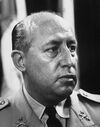
|
General Umberto D'Aloia (1915-1987) |
- | 14 March 1972 |
28 January 1973 |
Interim president | Military |
| Took power in the 1972 coup. Stated he would hand over power to a new government after passing a new constitution in November 1972 - the constitution implemented emulated the para-fascist government of Ottaviano Castello and embraced authoritarianism, anti-communism and nationalism crushing political dissent and creating a one-party state under the Party of National Reconstruction. | |||||||
| 40 | 
|
Ignazio Antoniotto (1926-1994) |
42 | 28 January 1973 |
28 January 1978 |
1972 — 93.54% | Party of National Reconstruction |
| Appointed as president by the military, Antoniotto was at first considered little more than a figurehead as the military chiefs held real power. Antoniotto however attempted to block moves to liberalise the economy supporting conservative military officers who favoured a corporatist model, and was seen as the ideological forebearer of the regime. | |||||||
| 41 | 
|
Luciano Pella (1940-) |
43 | 28 January 1978 |
28 January 1983 |
1978 — 98.3% | Party of National Reconstruction |
| A hardliner within the PRN, Antoniotto was elected in the last uncontested Mariranan election. As president he was seen as an opponent of economic liberalisation after the removal of Xavier Borràs and supported a hardline domestic policy, personally insisting on singing multiple death warrants. | |||||||
| 42 | 
|
Vittorio Rumor (1940-) |
44 | 28 January 1983 |
28 January 1988 |
1983 — 62.3% | Party of National Reconstruction |
| A former finance minister, Rumor had been the driving force behind economic liberalisation being the primary author of the 1980 Rumor Plan. During the tranistion to democracy from 1986 to the handover of power in 1988 Rumor played a key role in mediating negotiations between the opposition and the government. | |||||||
De facto heads of state
| No | Picture | Name | Tenure | Affiliation | |||
|---|---|---|---|---|---|---|---|
| 1 | 
|
General Umberto D'Aloia (1915-1987) |
14 November 1972 |
22 May 1975 |
Military | ||
| De facto head of state, D'Aloia's government promoted authoritarian policies leading unprecedented repression of political opponents. D'Aloia advocated for a third way between liberal capitalism and Marxist socialism, endorsing instead a policy of corpratist autarky. This led to economic difficulties, causing discontent within the SCAFC about D'Aloia's leadership. D'Aloia was subsequently removed from power in 1975 on the grounds his that he did not have the mental capacity to continue office. | |||||||
| 2 | 
|
General Xavier Borràs (1928-1992) |
22 May 1975 |
16 November 1980 |
Military | ||
| Borràs, of Floren descent, was appointed as Chairman of the SCAFC to replace D'Aloia. Borràs was seen to oversee the worst human rights abuses of the period expanding repression setting up a network of labour camps and utilising death flights. However he was increasingly marginalised within the SCAFC to his deputy Vincenzo Rustichelli and in 1980 was forced to resign following economic collapse. | |||||||
| 3 | 
|
General Vincenzo Rustichelli (1926-) |
22 November 1980 |
14 October 1986 |
Military | ||
| A hardliner on the SCAFC, Rustichelli largely continued the policies of his predecessor. Under Rustichelli Marirana became known as a hub for drug trafficking attracting an increasingly notorious reputation as a result. As a result of the 1980 recession Rustichelli abandoned autarky and embraced neoliberalism privatising state-owned enterprises, deregulating industry and dismantling tariffs. However protests during 1986 led to Rustichelli to resign from the government. | |||||||
| 4 | 
|
Standing Committee of Armed Forces Command | 14 October 1986 |
17 December 1986 |
Military | ||
| Following the resignation of Rustichelli the Standing Committee of Armed Forces Command exercised de facto control over the government, albeit with the position of Chairman being left vacant. The SCAFC dissolved itself in December 1986 after president Antoniotto started formalising the democratisation process. | |||||||
Seventh Republic
| No | Picture | Name | Term | Tenure | Presidential mandate | Affiliation | |
|---|---|---|---|---|---|---|---|
| 43 | 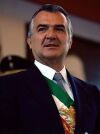
|
Stefano Uccello (1922-2006) |
45 | 28 January 1988 |
28 January 1993 |
1987 — 82.7% | Democratic Alternative Coalition for Democratic Action |
| Considered a leading figure against the dictatorship, Uccello had the support of the Coalition for Democratic Action, an alliance of pro-democrat parties that enabled him to achieve victory in the 1987 election. The Uccello government implemented democratic reforms overseeing the passing of a new constitution and depoliticising the armed forces and judiciary but also controversially granted an amnesty for members of the military regime. Economically Uccello continued the neoliberal economic reforms of the military government implementing privatisation and marketisation, but also launched some social programs to create a social market economy. Right wing paramilitaries, leftist insurgents and drug cartels increased their violence under Uccello's rule. | |||||||
| 44 | 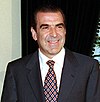
|
Oliviero Michelozzi (1944-) |
46 | 28 January 1993 |
28 January 1998 |
1992-93 — 61.5% | Anti-Revolutionary Party Coalition for Democratic Action |
| The son of Antonio Michelozzi, Michelozzi took office as the Mariranan civil war worsened, with the central government losing large amounts of land to cartels, left wing groups and former government backed right wing groups. As a result Michelozzi allowed the JDF to intervene in the war, leading to a downward spiral in violence. Michelozzi continued the economic reform agenda of the previous governments leading to an average 5.6% economic growth under his term. | |||||||
| 45 | 
|
Giordano Falcomatà (1951-) |
47 | 23 January 1998 |
23 January 2003 |
1997-98 — 56.6% | Anti-Revolutionary Party Coalition for Democratic Action |
| Falcomatà continued economic liberalisation policies privatising state-owned industry and implementing a policy of fiscal retrenchment. Falcomatà was also was accused of colluding with right-wing death squads and drug cartels during his tenure significantly undermining his presidency. An aborted labour reform law led to Falcomatà's popularity to further sink in the face of protests. | |||||||
| 46 | 
|
Alfonso Hatoyama (1941-) |
48 | 28 January 2003 |
12 November 2006 |
2002-03 — 57.3% | Pole of Good Government Convergence for Freedom |
| From 11th September 2006 – 12th November 2006 Hatoyama was suspended from the presidency with the Cabinet exercising presidential duties. | |||||||
| A Nematsujin Mariranan, Hatoyama promoted economic interventionism and free trade as well as beginning a strategy of counter-narcotics in regards to ending drug trafficking, utilising the Inter-Provincial Security Services extensively to crackdown on drug usage. However in 2006 his administration entered significant controversy over a corruption scandal regarding the privatisation of Mariranan waterworks, resulting in Hatoyama to be impeached in November 2006. | |||||||
| 47 | 
|
Roberto Vernizzi (1945-) |
- | 12 November 2006 |
28 January 2008 |
Interim president | Anti-Revolutionary Party Coalition for Democratic Action |
| Vernizzi ascended to the presidency following Hatoyama's impeachment. Following the impeachment Vernizzi launched an investigation into corruption into the Hatoyama government and halted the privatisation of Mariranan Waterworks. In 2007 a currency crisis was triggered leading to a capital flight - as the Mariranan economy was dependent on foreign investment the economy entered the worst recession in 100 years, with income poverty rising above 50%. | |||||||
| 48 | 
|
Dario Lorenzin (1948-) |
49 | 28 January 2008 |
28 January 2013 |
2007-08 — 54.6% | Positive Marirana Alliance of the Centre |
| Under Lorenzin attempts where made to expand the anti-corruption drive, but economic difficulties meant the government's plans for institutional reform were scrapped. Lorenzin entered the first serious peace talks with insurgent groups in 2010 but the talks collapsed in 2012. In 2010 his coalition collapsed resulting in Lorenzin to spend the rest of his presidency in cohabitation with a CPLD-led government. | |||||||
| 49 | 
|
Giorgio Macciocchi (1959-) |
50 | 28 January 2013 |
28 January 2018 |
2012-13 — 50.64% | Anti-Revolutionary Party Coalition for Democratic Action |
| Elected 2013, Macciocchi froze the peace process with insurgent groups, escalating the insurgency. His government also took a hardline stance to drugs and has sought to increase action against drug cartels. Economically, the Macciocchi government attempted to spur growth through large scale economic reforms liberalising the pension system and deregulation the labour market - this led to an increase in growth but poverty and inequality became much wider whilst street protests noticeably increased. In late 2016 the insurgency became more deadly resulting in Macciocchi to request a much larger JDF intervention. A corruption scandal in 2017 saw an unsuccessful impeachment process launched against Macciocchi. | |||||||
| 50 | 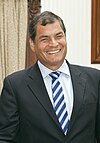
|
Lorenzo Occhetto (1968-) |
51 | 28 January 2018 |
Incumbent | 2017-18 — 59.3% | Democratic Party of Socialists Avanti Marirana! |
| Incumbent president of Marirana. Occhetto was the first leftist ever to win a presidential election in Marirana. | |||||||
